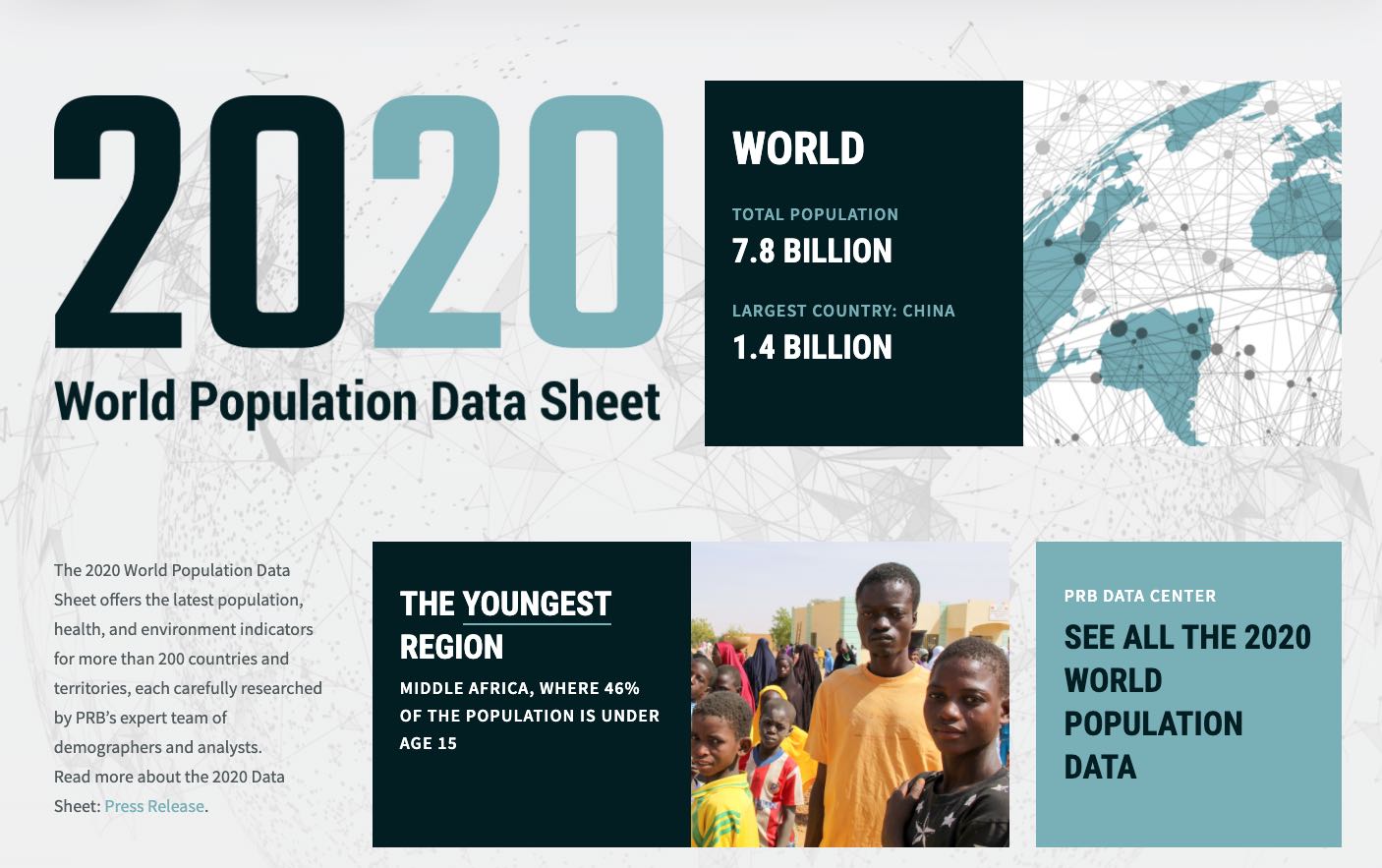
21st Century Will Transform World Population
Date
May 1, 2001
Author
Recent
Focus Area
(May 2001) It is now clear that the 21st century will feature a major transformation in world population.
Population growth in the industrialized (or “more developed”) countries has essentially stopped. Demographic growth has now shifted almost entirely to the less developed countries of Africa, Asia, and Latin America.
This is one of the major conclusions reached in the annual report on global population trends, the “2001 World Population Data Sheet,” published on May 21 by the Population Reference Bureau.
“Currently, of the 83 million people added to global population each year by the difference between births and deaths, only 1 million are in the industrialized countries,” said PRB demographers Carl Haub and Diana Cornelius, who prepared the Data Sheet. “The result will be a very different world in terms of population. In 1950, there were twice as many people in the less developed countries. By 2050, that difference could be almost six to one. The developing world’s population is projected to increase by 2.9 billion by 2050, compared with only 49 million in the more developed countries. Population growth this century will depend on how quickly, or how slowly, birth rates decline in the areas of the world where we have seen either no decline or moderate decline.” (See table below, “World’s Largest Countries, 2001 and 2025.”)
In India, for example, much birth rate decline has taken place in the more literate and prosperous southern states. The key to that country’s future population is what happens next. In the heavily populated northern states, where rates of illiteracy and fertility are much higher, birth rates may not decline as rapidly, leading to unprecedented growth in population. This is a key issue in India, which passed the 1 billion mark just last year. Elsewhere, recent survey data from a number of less developed countries, including Bangladesh and Egypt, indicate that fertility declines measured earlier have slowed.
Major highlights of the Data Sheet include:
- Women in less developed countries (excluding China) average 3.6 children, compared with only 1.6 in the more developed countries. Annually, about 123 million babies are born to mothers in less developed countries, while there are about 13 million births in the more developed countries (Europe, North America, Australia, Japan, and New Zealand). But the number of births in the latter countries is offset by about 12 million deaths each year.
- In Europe, fewer babies are born each year than there are deaths, leading to “natural decrease,” or population decline, except where it is offset by immigration. This situation is due both to the low birth rate and to higher proportions of older people in the population.
- The United States is now the only industrialized country in the world with a fertility rate at or above the “replacement level” of 2.1 children per woman.
- One of the major population developments in recent years has been the spread of HIV/AIDS, particularly in sub-Saharan Africa. As a result, the populations of several African countries — Botswana, South Africa, and Zimbabwe — are expected to decline over the next 50 years, a sharp reversal from past projections. Among adults in Botswana’s 1.6 million population, an astounding 36 percent are infected with the virus.
- Despite AIDS, Africa will make a major contribution to global population growth, adding about 1 billion people between now and 2050, an addition greater than the total population of Europe (including Russia).
- Bad demographic news from Russia continues, as both the birth rate and life expectancy have dropped again. The situation is similar in Ukraine. Those two countries have the highest rate of natural decrease in modern history, a remarkable -0.7 percent per year. Life expectancy for Russian males fell for the second year in a row, to only 59 years, after having registered a comeback earlier in the 1990s.
- Globally, six out of 10 couples practice some form of family planning, although the proportion is less than half (47 percent) in the less developed countries. The use of family planning is lowest in sub-Saharan Africa, where only 19 percent of couples use contraception.
World’s Largest Countries in 2001
| Rank | Country | Population |
|---|---|---|
| 1 | China | 1.27 billion |
| 2 | India | 1.03 billion |
| 3 | United States | 285 million |
| 4 | Indonesia | 206 million |
| 5 | Brazil | 172 million |
| 6 | Pakistan | 145 million |
| 7 | Russia | 144 million |
| 8 | Bangladesh | 134 million |
| 9 | Japan | 127 million |
| 10 | Nigeria | 127 million |
| 11 | Mexico | 100 million |
| 12 | Germany | 82 million |
| 13 | Vietnam | 79 million |
| 14 | Philippines | 77 million |
| 15 | Egypt | 70 million |
World’s Largest Countries in 2025
| Rank | Country | Population |
|---|---|---|
| 1 | China | 1.43 billion |
| 2 | India | 1.36 billion |
| 3 | United States | 346 million |
| 4 | Indonesia | 272 million |
| 5 | Pakistan | 252 million |
| 6 | Brazil | 219 million |
| 7 | Nigeria | 204 million |
| 8 | Bangladesh | 181 million |
| 9 | Russia | 137 million |
| 10 | Mexico | 131 million |
| 11 | Japan | 121 million |
| 12 | Ethiopia | 118 million |
| 13 | Philippines | 108 million |
| 14 | Congo, Democratic Republic of (Zaire) | 106 million |
| 15 | Vietnam | 104 million |

 ">
">
 ">
">